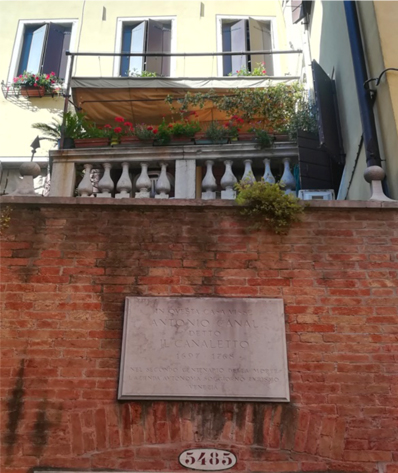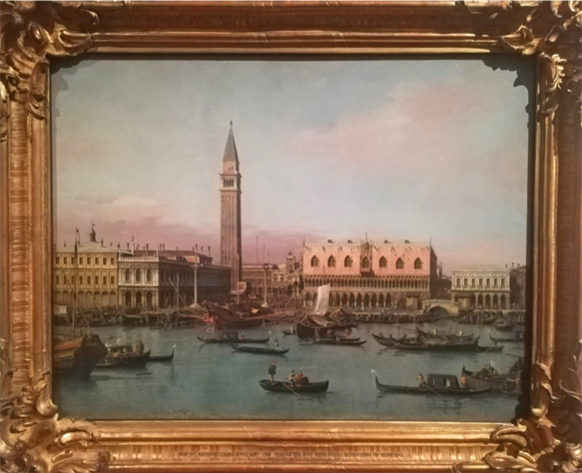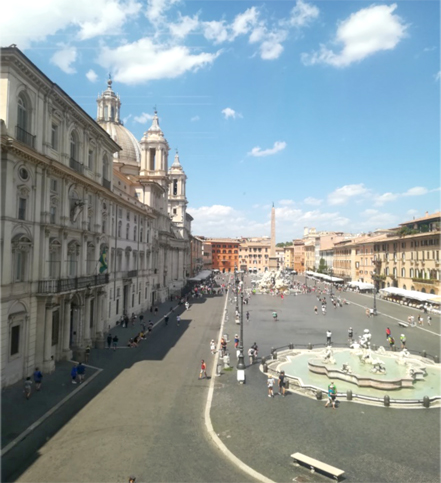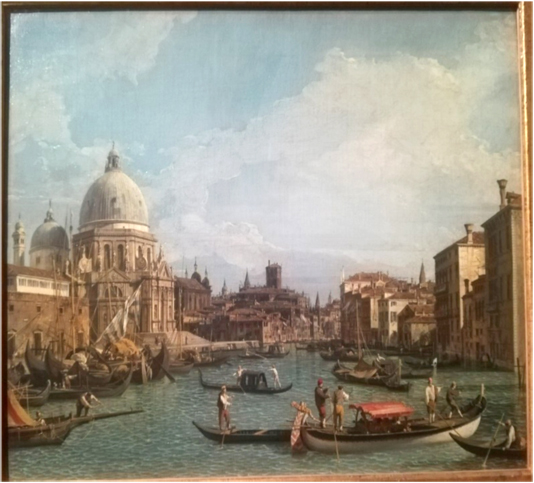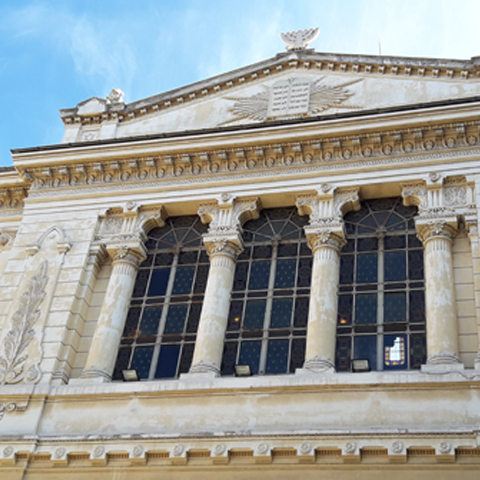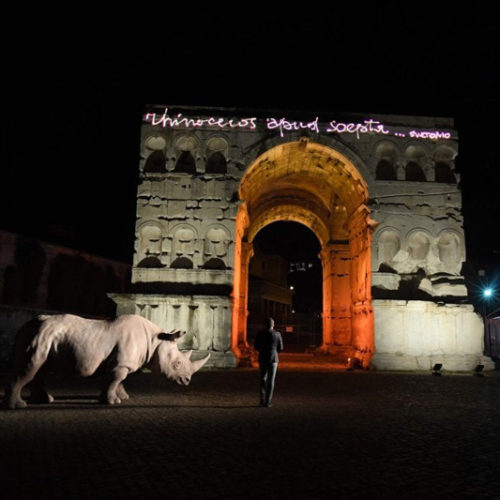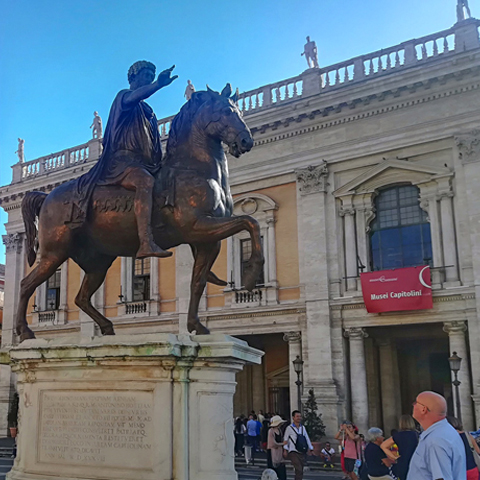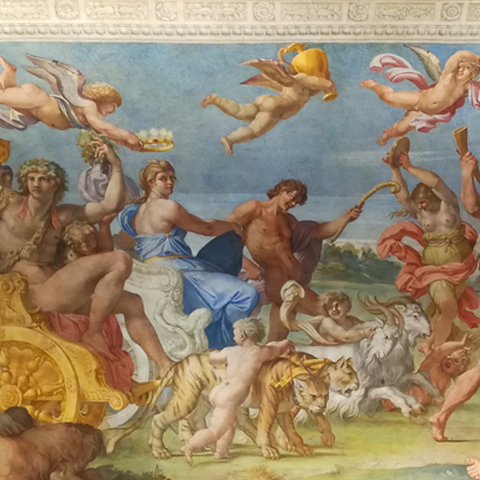Mention the name Canaletto and richly detailed and carefully composed views of eighteenth century Venice will spring into most people’s minds. Certainly, his paintings remain much admired centuries after their creation, as well as being instantly recognizable and vividly evoking the age and society in which they were painted. Canaletto (real name: Giovanni Antonio Canal) was born in Venice at the turn of the 18th century and gained his mononym, which means ‘Little Canal’, to differentiate him from his father, Bernardo Canal – the canals of Venice do not bear any relevance to his name! On a trip to Venice earlier this year, I was surprised to find myself standing under a small and rather unremarkable building with a plaque stating that it was his birthplace. I am familiar with his paintings, but I realized that I knew remarkably little about the man himself, and hence I was excited to hear that the Museo di Roma organized an exhibition of Canaletto’s work in Rome to commemorate the 250th anniversary of his death – in fact, such is its popularity, they decided to extend it until fall 2018.
- Canaletto’s house in Venice
- Il Molo dal bacino di San Marco
Canaletto (1697-1768) was born into an artistic family. He worked as an apprentice alongside his father and brother as a theatrical scene painter, where he was motivated to start creating his own paintings, using the people and their daily life in Venice as his inspiration. Canaletto’s earliest work is the most coveted and, according to many authorities, his best. He travelled to Rome to complete his education and when he returned to Venice, he began painting in a topographical style – from Nature. He made innovative use of atmospheric effects and strong local colours, and for this reason he is said to have inspired the Impressionist art movement.

The Stonemason’s Yard
The subjects of his paintings developed as his experience grew, and he went from painting quiet urban scenes (such as The Stonemason’s Yard) to his grand images of the canals of Venice and the Doge’s Palace, often recording the lavish Venetian public ceremonies. As his art developed, so did his ambition and he began to work with wealthy patrons who gave him very lucrative commissions, despite his being described as “whimsical, obstinate, and unreliable” and “varying his prices everyday”! Canaletto’s method was to make preliminary sketches from a boat, adding notes to help him remember particular colours or tones, before using these to make more completed drawings and paintings back in his studio.
Canaletto’s work attracted rich English gentlemen who bought his paintings when they were visiting Venice as part of their Grand Tour (supposedly a way of finishing off their education – but in Venice, they may have been more preoccupied by the masked balls of the era – and all the mystery, excess and flirtation associated with these events)! Canaletto’s views of Venice were the perfect “souvenir” to remind them of their time in Venice when they were back in the more sedate environment of eighteenth-century London.

Piazza San Marco, looking east
Joseph Smith, a wealthy banker and trader, who was later appointed British Consul to Venice, spotted Canaletto’s potential and began marketing his paintings, primarily to English buyers – but this arrangement was disrupted when the War of the Austrian Succession broke out, leading to a reduction in the number of English travellers in Venice. Due to the significant drop in income, Canaletto decided to move to London, where he lived for nine years and where there was a ready market of English aristocracy wanting paintings of their family seats. He also painted famous views of London, such as Westminster Bridge. A notable feature of the exhibition in Rome is that, amazingly, two parts of a single canvas, titled Chelsea from Battersea Reach, have been brought together for the first time since they were separated in 1802. One half comes from Blickling Hall in the UK and the other half from the National Museum in Havana, Cuba.
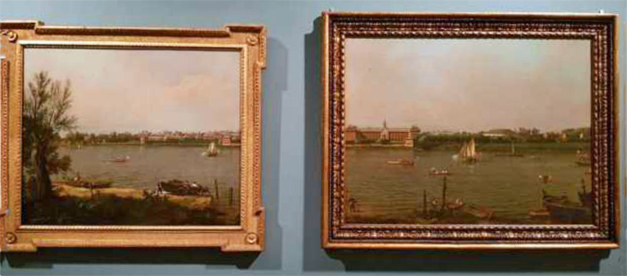
Chelsea from Battersea Reach
The exhibition is housed in a particularly lovely location at the west end of Piazza Navona in the Museo di Roma. There are 67 paintings, drawings, and documents carefully selected for their beauty as well as their importance. The collection illustrates his thinking, method, technique, and relationship with reality; the latter is something that has always been debated by scholars. His paintings benefit from both looking at them carefully as well as taking in the overall impression, as it only takes a little bit of imagination to put yourself in the scene alongside the vividly depicted people and animals going about their day. We don’t know if he used a camera obscura to help create accurate representations of what he saw, but certainly Canaletto was more concerned with the compositional harmony of his work than simply recording views slavishly. He rearranged and altered elements to create ideal depictions of the city and narrowed or opened out stretches of canal; he straightened curves and eliminated less important buildings. As a development of this free approach to topography he painted capricci, in which famous buildings were placed in picturesque settings, an important genre in eighteenth century Venetian art.
- View of Piazza Navona from Museo di Roma
- The Entrance to the Grand Canal with Basilica of Santa Maria della Salute
Canaletto’s legacy is immense. As early as the eighteenth century, European monarchs, including Catherine the Great, were vying to buy his work. The record price paid at auction for a Canaletto is £18.6 million for View of the Grand Canal from Palazzo Balbi to the Rialto, set at Sotheby’s in London in July 2005. Despite his international success, the Venetians were not as taken with their homegrown artist, and hence did not buy his work which is why so much of it has ended up abroad. In my opinion, Canaletto’s views of Venice are his best: the light on the water, the well-known skyline and buildings, and the human interest make them really majestic. Scholars have been less impressed with his work from his time in England, describing it as overly stylized and lifeless, and I would be inclined agree. However, ultimately, he was a brilliant artist, and the difference between seeing these pictures in reality, as opposed to photographs, is indescribable. Go!
Museo di Roma
Piazza Navona 2
Tel: 060608
www.museodiroma.it/
Opening hours: 10:00 to 19:00 (last admission at 18:00)
Tickets (exhibition only): full price – €11,00; concessions – €9,00
